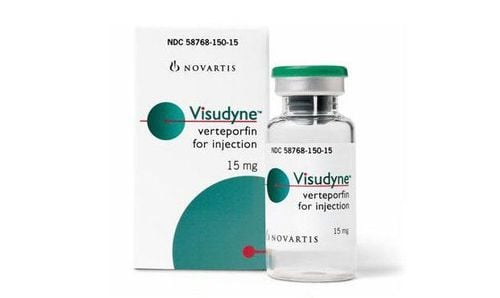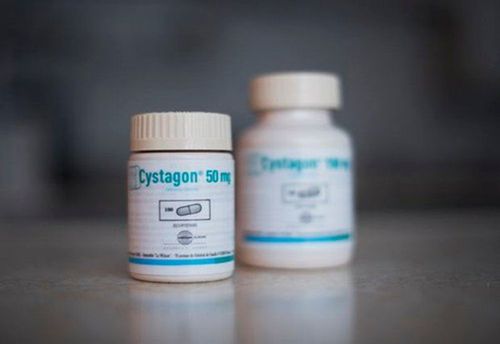This is an automatically translated article.
Asteroid hyalosis (asteroid anemia) is a fairly common condition where tiny calcium particles build up inside the eye. They cause symptoms that are invisible to the naked eye. A patient can only be diagnosed with this disease when the doctor notices the calcifications during a routine eye exam.
1. What is Asteroid Anemia?
Intraocular asteroid hyalosis is a condition that causes the accumulation of lipids and calcium in the vitreous of the eyeball. The lens is a structure in the eye that functions as a lens to help focus light on the retina. The retina is the layer that senses light and sends visual signals to the brain. In a normal eye, light passes through the lens and focuses on the retina. The lens must be transparent to create a clear image. In some cases, particles of fat and calcium grow and become suspended in that liquid.
These accumulated particles are white and reflect light. This phenomenon is called an "asteroid" because the accumulated particles look like stars or asteroids to the eye. They cannot be seen with the naked eye, but the doctor will detect them by examining the eyes with an ophthalmoscope.
If your doctor notices a white spot in your eye, he or she will need to conduct a thorough examination to confirm that the cause is asteroid hyalosis and not another serious problem with the eye. In fact, white spots in the eyes can be a sign of many different diseases. So the doctor needs to determine exactly if it is hyalosis or not? They can dilate the pupils using special eye drops. This will allow them to see deeper into your eye more clearly, making a more accurate diagnosis of hyalosis.
Asteroid hyalosis is now quite common. Some studies indicate that about 2% of the population will have it, although it is more common in people over 60 years of age. In particular, hyalosis usually occurs in only one eye, rarely occurs simultaneously in both eyes.
2. What is the cause of Asteroid Anemia?
Experts aren't sure what causes asteroid hyalosis. No other racial or ethnic group is more likely to get this disease. The risk of this disease increases with age, and women are diagnosed more often than men.
Some researchers have found that asteroid hyalosis is more common in people with conditions like diabetes, high blood pressure, and heart disease. However, other studies have failed to show a cause-and-effect relationship between health conditions. If you have a chronic condition like diabetes and your eye doctor notices symptoms of hyalosis, they may recommend regular checkups to make sure no other problems have developed.
3. What are the symptoms of Asteroid Anemia?
In most cases, asteroid anaemia does not cause any symptoms. They do not impair vision and patients experience no discomfort. Accordingly, patients should have regular eye exams so that doctors can detect early if they have the disease.
However, some patients with asteroid hyalosis say they sometimes see transient blurry spots in their vision called floaters. They appear because the fibers cast shadows on the patient's retina that the patient can see. These spots are usually not bothersome.
If the patient notices more prominent nodules than usual in one eye or vision is impaired, contact a doctor immediately for timely diagnosis, treatment and treatment, to avoid affecting vision. force. Those symptoms could be signs of a retinal injury. This is a serious eye condition and the patient will need prompt treatment to prevent serious eye consequences.
4. How is Asteroid Anemia Treated?
Asteroid anemia usually does not cause serious problems and does not require treatment. This condition also does not become serious over time, so the patient does not need treatment intervention. Your ophthalmologist will monitor the progression of the disease over time. If conditions other than asteroid anemia are present, the physician may need to plan appropriate treatment for the patient. If you are being treated for another eye disease, the patient should inform the doctor about the asteroid ischemia of the eye so that the doctor can understand and give appropriate and timely treatment.
Patients can still get cataract surgery or laser vision correction if they have asteroid anaemia. In rare cases, particles that accumulate in a patient's eye become so dense that it impairs vision. At that time, the doctor will perform vitrectomy surgery. The doctor will remove the mucus and accumulated particles. They can then replace the liquid with a synthetic gel. The granules usually do not reappear after vitrectomy.
If the patient has Asteroid Anemia, the patient should have regular eye exams. Regular ophthalmology visits help maintain overall eye health and monitor the progression of particles in a patient's eye. If the patient has vision changes, the doctor may prescribe eyeglasses or other treatments to help the patient see better.
Vinmec International General Hospital is a high-quality medical care address with a team of doctors and pharmacists with many years of experience and good expertise. When having health problems, customers can contact the hospital to be examined and have the best indications for drug treatment.
Please dial HOTLINE for more information or register for an appointment HERE. Download MyVinmec app to make appointments faster and to manage your bookings easily.
Reference source: webmd.com













